Ozito OJS-800 Handleiding
Ozito
Niet gecategoriseerd
OJS-800
Bekijk gratis de handleiding van Ozito OJS-800 (4 pagina’s), behorend tot de categorie Niet gecategoriseerd. Deze gids werd als nuttig beoordeeld door 56 mensen en kreeg gemiddeld 4.8 sterren uit 28.5 reviews. Heb je een vraag over Ozito OJS-800 of wil je andere gebruikers van dit product iets vragen? Stel een vraag
Pagina 1/4

REVERSE
CORRECT
BOOST
JUMP STARTER
& POWER BANK
INSTRUCTION MANUAL
SPECIFICATIONS
Output: 12V
Peak Current: 400A
Li-Po Battery: 11.1V, 2.5Ah, 27.75Wh
Start Current: 200A - 5 Sec.
Weight: 0.35 kg
OJS-800
STANDARD EQUIPMENT
WARRANTY
OZITO Australia/New Zealand (Head Office) 25 Fox Drive,Dandenong South, Victoria, Australia 3175.
ozito.com.au
Jump Starter & Power Bank
0221
IN ORDER TO MAKE A CLAIM UNDER THIS
WARRANTY YOU MUST RETURN THE PRODUCT
TO YOUR NEAREST BUNNINGS WAREHOUSE
WITH YOUR BUNNINGS REGISTER RECEIPT.
PRIOR TO RETURNING YOUR PRODUCT
FOR WARRANTY PLEASE TELEPHONE OUR
CUSTOMER SERVICE HELPLINE:
Australia: 1800 069 486
New Zealand: 0508 069 486
The benefits provided under this warranty are in addition to other rights and remedies
which are available to you at law.
Our goods come with guarantees that cannot be excluded at law. You are entitled to a
replacement or refund for a major failure and for compensation for any other reasonably
foreseeable loss or damage. You are also entitled to have the goods repaired or replaced
if the goods fail to be of acceptable quality and the failure does not amount to a major
failure.
Generally you will be responsible for all costs associated with a claim under this warranty,
however, where you have suffered any additional direct loss as a result of a defective
product you may be able to claim such expenses by contacting our customer service
helpline above.
TO ENSURE A SPEEDY RESPONSE PLEASE
HAVE THE MODEL NUMBER AND DATE OF
PURCHASE AVAILABLE. A CUSTOMER SERVICE
REPRESENTATIVE WILL TAKE YOUR CALL AND
ANSWER ANY QUESTIONS YOU MAY HAVE
RELATING TO THE WARRANTY POLICY OR
PROCEDURE.
POWER BANK/JUMP STARTER SAFETY WARNINGS
12V 400A
3 YEAR REPLACEMENT WARRANTY*
Your product is guaranteed for a period of 36 months from the original date of
purchase. If a product is defective it will be replaced in accordance with the terms of
this warranty. Warranty excludes consumable parts, for example: valve adapters and
accessories.
*This product is intended for DIY use only and replacement warranty covers domestic use.
WARNING
The following actions will result in the warranty being void.
If the tool has been operated on a supply voltage other than that specified on the tool.
If the tool shows signs of damage or defects caused by or resulting from abuse, accidents
or alterations.
Failure to perform maintenance as set out within the instruction manual.
If the tool is disassembled or tampered with in any way.
Professional, industrial or high frequency use.
Storage Case
USB Charge Cable, 2-in-1
Micro/Mini USB Cable
WARNING! Save all warnings and instructions for future reference
WARNING! Read all safety warnings and all instructions. Failure to follow the
warnings and instructions may result in electric shock, fire and/or serious injury.
Power Bank
1. The power bank is not fully charged out of the carton. First read the safety instructions and
then follow the charging notes and procedures.
2. For optimum performance avoid low discharge cycles. Charge the power bank frequently.
3. Use and store the power bank in dry conditions with low humidity between 0-40°C, ideally
at 15°C. Avoid exposing the power bank to direct sunlight.
4. Do not keep the power bank in places where temperatures are liable to reach over 40°C,
such as in a car, metal shed or similar that is in direct sunlight.
5. Do not ignite the power bank or expose it to fire. There is a risk of explosion!
6. Do not exhaustively discharge batteries. Exhaustive discharge will damage the battery cells.
The most common cause of exhaustive discharge is long-term storage and continued use
of low-charge batteries. Always store the power bank with some charge. Charge the power
bank every 4 months to restore charge. Stop working as soon as the performance of the
power bank falls noticeably or the electronic protection system triggers.
7. Protect the power bank from overloads. Overloads will quickly result in overheating and cell
damage inside the battery housing without this overheating being apparent externally.
8. Avoid damage and shocks. Do not use the power bank which have been dropped from a
height of more than one meter or strong external impact, even if the housing of the power
bank appears to be undamaged. The battery cells inside the power bank may have suffered
serious damage.
9. Use only original battery packs. The use of other batteries may result in injuries, explosion,
and a fire risk.
10. Protect your rechargeable battery against moisture, rain and high humidity. Moisture, rain
and high humidity can cause dangerous cell damage. Never charge or use batteries which
have been exposed to moisture, rain or high humidity.
11. Never attempt to open the power bank for any reason. If the plastic housing of the power
bank is damaged, do not use the power bank.
12. When power bank is not in use, keep it away from other metal objects, like paper clips,
coins, keys, nails, screws or other small metal objects, that can make a connection from
one terminal to another. Shorting the battery terminals together may cause burns or a fire.
13. Under abusive conditions, liquid may be ejected from the battery; avoid contact. If
accidental contact occurs, flush with water and seek medical help immediately. Liquid
ejected from the battery may cause irritation or burns.
14. Do not use power bank that is damaged or modified. Damaged or modified power bank
may exhibit unpredictable behaviour resulting in fire, explosion or risk of injury.
15. Never service damaged battery packs. Service of battery packs should only be performed
by the manufacturer.
16. Do not disassemble Battery. This may result in a risk of electric shock, electrocution or fire.
17. Protect the power bank charger and its cable from damage and sharp edges. Have
damaged cables repaired by an authorised service agent before use.
18. Keep the power bank and charger out of children’s reach.
19. Do not use damaged power bank chargers.
20. Do not use the supplied power bank charger to charge other electronic devices.
21. The power bank may become warm during use. Allow the power bank to cool to room
temperature before commencing with the charging.
22. Do not over-charge the power bank. Do not exceed the maximum charging times.
23. Charge the power bank in dry conditions with low humidity between 10-40°C. Avoid
exposing power bank and charger to direct sunlight.
24. Do not use the power bank which have suffered deformation during the charging process
or shows any other signs of abnormalities including, excessive curvature of the housing,
gassing, hissing or cracking.
25. Never fully discharge the power bank. A complete discharge of the power bank will lead to
premature ageing of the battery cells.
26. Never charge the power bank unsupervised.
27. Do not cover or place any object on top of the charger, place the charger away from heat
sources.
28. An extension cord should not be used unless necessary. Use of an improper extension cord
could result in the risk of fire, electric shock or electrocution.
29. Do not disassemble charger. This may result in a risk of electric shock, electrocution or fire.
30. To reduce risk of electric shock, unplug the charger from the outlet before attempting any
cleaning. Removing the power bank will not reduce this risk.
31. Do not use the power bank or the battery charger near vapours and inflammable liquids.
32. Do not submerge the power bank in water. Do not use the power bank if any contact with
liquid.
33. During charging, the battery must be placed in a well-ventilated area.
34. Never use or charge the power bank if you suspect that the last time, they were charged
was more than 12 months previously. There is a high probability that the battery pack has
already suffered dangerous damage (exhaustive discharge).
Jump Starter
1. Protect Jump Starter from overloads. Overloads will quickly result in overheating and cell
damage inside the battery housing without this overheating being apparent externally. Do
not attempt to jump start a car more than 4 times in 10 minutes. The number of times that
you can attempt to start the engine (max. 10) varies according to the ambient temperature,
the condition of the battery you want to start, and the charge level of the jump start power
bank battery.
2. If fewer than 3 LEDs are illuminated, the jump start is not available.
3. Never connect to the vehicle bodywork. Make sure that the connector on the jump start
cable is securely connected to the device socket. If the connection is loose during jump
starting, the connector could melt as a result of the high current.
4. The poles on the vehicle battery must be clean and the clamps of the jump start cable must
be securely attached to the battery poles.
5. Do not connect the clamps of the jump start cable together during jump starting – Short
circuit.
6. At very low temperatures a number of jump start attempts may be required before the car
starts up. Allow one minute waiting time between each attempt. Remove the equipment
within 30 seconds after a successful jump start as far as possible.
7. If you carry out any work in the engine bay of a vehicle, watch out for rotating and moving
parts.
8. During jump starting, it is imperative not to wear any items of clothing made of synthetic
materials in order to avoid spark formation caused by electrostatic discharge.
9. Only grasp clamps by the insulated surfaces.
10. Make sure the vehicles are in either Neutral (Manual) or Park (Auto) with the handbrake on.
11. Do not leave either engine running unattended.
12. Keep away from children as they could potentially strangle or injure themselves.
13. Keep children away from work area
14. People with pacemakers should consult their physician(s) before use. Electromagnetic
fields in close proximity to heart pacemaker could cause pacemaker interference or
pacemaker failure. Caution is necessary when near coil, spark plug cables, or distributor of
running engine. Engine should be off during distributor adjustment.
15. Do not point the light directly at a person’s face. Avoid staring at the light.
Risk of Fire & Deflagration
• Do not use the jump starter in environments where explosions may occur, such as in
environments with ignition sources, flammable vapours, gases, dust or similar.
• Ensure that the jump start cable is not damaged.
• Do not short circuit the jump starter.
• Do not shorten or extend the jump start cable.
• Do not wear clothing made of synthetic materials during charging. They could generate
sparks due to electrostatic charge.
Risk of Explosion & Chemical Burns
• Do not start a battery if it is cracked or damaged.
• Do not lean over the battery. The electrolyte from the discharged battery is also liquid at low
temperatures.
• Wear protective gloves and safety glasses when working on the battery. Do not touch
damaged or leaking cells. Consult SDS if contact has been made.
• Do not allow battery acid to make bodily contact. In the event of contact with battery acid
immediately flush the applicable areas with plenty of clean water and consult a doctor.
• Never jump start a vehicle if the battery is frozen as the battery may explode. If the sides of
the battery is bulged, it is likely frozen.
• Car batteries discharge hydrogen gas, which may ignite from flying sparks. Ensure that the
jump start cable is connected in the correct order to reduce the risk of sparks.
• Only run the engine in a well-ventilated area to ensure toxic exhaust gas does not build up.
• Remove any vent caps on non-maintenance free batteries – be very careful as battery acid
is highly corrosive
• Only use jump starter as prescribed in the manual.
Avoid flames and sparks. Explosive gas is released from the car battery during jump starting.
If you smell an acrid odour of gas, there is an acute danger of explosion. Ventilate the room
immediately and thoroughly.
Refer to the instructions issued by the car battery manufacturer.
Refer to the information and instruction issued by the vehicle manufacturer.
Risk of Electric Shock
• Ensure the ignition switch is in the OFF position on the vehicle while connecting leads.
• Do not use the jump start cable if it shows signs of wear or damage.
• Turn off the lights and power draining functions (such as the stereo and interior light) to help
ease the strain off the charged battery
• Ensure that the terminal clamps do not touch. Contact between live connections may result
in sparks, electrocution, fire, severe personal injury or even death.
• Ensure that there is no contact between the bodies of the vehicles and that no such contact
occurs. Vehicles in contact with each other could establish a ground connection and result in
personal injury to the user or bystanders.
• When disconnecting the clamps, ensure that that the two clamps do not come into contact
with the rotating parts of the engine compartment.
• Do not expose jump starter to rain or wet conditions.
Jump Start Cable

IN:5V/9V Out:5V/9V Out:5V/2A
IN:5V/9V Out:5V/9V Out:5V/2A
REVERSE
CORRECT
BOOST
Charge Time
39 Hrs
Charger Output
5 Hrs
3.5 Hrs
2 Hrs
5V/1A
5V/1.5A
5V/2.4A
9V/2.0A
KNOW YOUR PRODUCT
1. CHARGING THE POWER BANK
SETUP & PREPARATION
ONLINE MANUAL
Scan this QR Code with your mobile
device to take you to the online manual.
1. LED Torch
2. Jump Starter Connection
3. 5V/2A USB Outlet
4. 5V/9V USB Outlet
12V JUMP STARTER & POWER BANK
4 51 2 3 Connecting to a USB Outlet
You can charge up the jump starter power bank via the micro
USB charging inlet with the supplied USB charger cable on any
standard USB outlet (e.g. the charger of a smart phone). Check that
the voltage on the rating plate is the same as your supply voltage
before you connect the USB charger. We recommend that you
charge up the equipment every 4 months.
1. Connect supplied USB
Charge Cable to the Micro
USB Charging Inlet and the
other end to a USB Charger
(not included).
2. Connect the USB Charger
into mains power outlet and
the Jump Starter Power Bank
will charge.
Note: The Battery Capacity LED’s will flash during charging and
indicate the charge status. The unit will become warm during the
charging process, this is normal.
3. Charging is complete when all LED’s are illuminated. Disconnect
the unit from the USB charger.
Note: The charging time will
depend on the charger output.
Use the charge time as a guide
for the time taken to fully
charge.
5. Micro USB Charging Inlet
6. On/Off Button
7. Battery Capacity LED’s WARNING! READ AND UNDERSTAND THE WARNINGS
BEFORE SETUP AND CHARGING.
WARNING! THE JUMP STARTER POWER BANK
OUTLETS MUST NOT BE USED WHILE CHARGING IS IN
PROGRESS.
Battery Capacity LED’s
Pressing the On/Off Button
briefly will illuminate the
Battery Capacity LED’s, the
number of LED(s) that are
illuminated indicate the current
charge level of the Li-Po
battery.
4 LED’s illuminated = 100%
1 LED illuminated = >25%
0 LED illuminated = <25%
8. BOOST Button
9. CORRECT Status LED
10. REVERSE Status LED
11. Red Positive Terminal Clamp (+)
12. Black Negative Terminal Clamp (–)
6
7
8
9
10
11 12
WARNING! DO NOT OVER-CHARGE THE POWER BANK!
DO NOT EXCEED THE MAXIMUM CHARGING TIMES. IT
WILL RESULT IN CELL DAMAGE. DO NOT LEAVE BATTERIES
IN THE CHARGER FOR DAYS ON END. NEVER CHARGE THE
POWER BANK UNSUPERVISED.

+ -
+ -
JUMPER
CABLE
2. LED TORCH & USB OUTLETS 3. JUMP START
OPERATION
OJS-800
WARNING! JUMP STARTING ONLY WITH THE
SUPPLIED JUMP START CABLE AND 12 VOLT
LEAD ACID BATTERIES IN MOTOR VEHICLES WITH
MAXIMUM PETROL ENGINE CAPACITIES OF 3000 CCA.
LED Torch
1. Press the ON/Off Button for 3 seconds - the
LED Torch will be illuminate.
2. Press the On/Off Button again - the LED
Torch will continuously flash (strobe light).
3. Press the On/Off Button again - the LED Torch will flash as an
“SOS” Morse code signal lamp.
4. Press the On/Off Button again to switch the LED Torch off.
USB Outlets:
The supply time varies according to the level of the charge of the
jump starter power bank, the level of power consumption and
the intensity of use of the connected device. The battery needs
charging when the remaining charge is 25% (1 LED illuminates).
The USB Outlets can be used in parallel. Please ensure that the
cumulative output current does not exceed 5A.
5V/2A USB Outlet - Max. 2A
1. Connect appropriate (or the supplied 2-in-1) USB cable to the
USB Outlet on the jump starter power bank and then to the
device you want to connect.
2. Press the jump starter power bank On/Off Button
5V/9V USB Outlet
Note: If charging does not work with this outlet, this means that
either the device or the cable is not supported. In this case, use
the 5V/2A USB Outlet for charging, as described above.
1. Connect the supplied 2-in-1 Micro/Mini USB Cable to the
5V/9V USB Outlet on the jump start power bank and then to the
device you want to connect.
2. Press the jump starter power bank ON/OFF Button.
3. The parameters required for charging will be determined at
the USB outlet and the connected device will be charged up.
Depending on the charger cable and the device being charged,
the charging time with the 5V/9V USB Outlet may be shorter
than with the 5V/2A USB Outlet.
WARNING! CHECK JUMP START CABLE AND CLAMP
FOR DAMAGE BEFORE EVERY USE. DO NOT USE
IF CABLE OR CLAMP INSULATION IS MISSING OR
DAMAGED AND WIRE IS EXPOSED.
Connecting to a Vehicle Battery
Before connecting make sure the vehicles battery terminals
are really clean as grease and dust. The battery MUST be
disconnected prior to cleaning. Check the battery and connections
for any cracks or damage before proceeding with cleaning. To
help ensure a good connection of the jump start cable clamps,
clean the battery terminals with a solution of baking soda and
water, and wipe the battery terminals with a cloth to remove any
dirt and grease.
Refer to the instructions in the vehicles owner’s manual for the car
radio etc. Ensure that all the vehicles electronics are turned OFF,
and that the ignition is turned OFF.
Check that at least 3 Battery Capacity LED’s are illuminated. The
jump starter power bank temperature must be within the range
of + 5 °C - + 40°C and the ambient temperature during jump
starting within the range of – 15°C - + 40°C.
1. Pull open the Jump Start
Connection cover, plug the
Jump Start Cable into the
opening.
Note: A Red LED will illuminate
if not securely connected or has
insufficient charge.
2. Connect the red positive
terminal clamp (+) to the
positive (+) pole on your vehicle
12V battery.
3. Connect the black negative
terminal clamp (–) to the
negative ( ) pole on your vehicle –
12V battery.
Ensure both clamps are secure.
WARNING! DO NOT LOOK INTO THE LED TORCH LIGHT
BEAM.
WARNING! CHECK THE VOLTAGE AND CURRENT
RATINGS OF THE DEVICE YOU WANT TO CONNECT (E.G.
MOBILE PHONE, LAPTOP). OBSERVE THE OPERATING
INSTRUCTIONS FOR THE DEVICE .
WARNING! ONLY THE JUMP START CABLE IS
ALLOWED TO BE CONNECTED DURING JUMP
STARTING. ANY POWER SUPPLY TO A CONNECTED
DEVICE, E.G VIA THE USB OUTLET, MUST BE
DISCONNECTED FIRST.
WARNING! DO NOT CONNECT TO THE VEHICLE
BODYWORK.
Product specificaties
| Merk: | Ozito |
| Categorie: | Niet gecategoriseerd |
| Model: | OJS-800 |
Heb je hulp nodig?
Als je hulp nodig hebt met Ozito OJS-800 stel dan hieronder een vraag en andere gebruikers zullen je antwoorden
Handleiding Niet gecategoriseerd Ozito
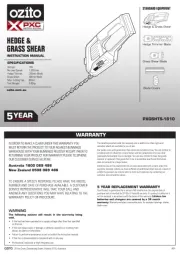
15 Augustus 2025
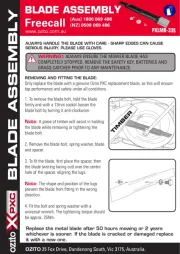
14 Augustus 2025
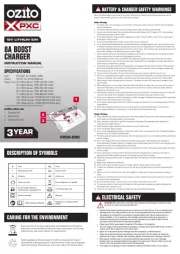
30 Juli 2025
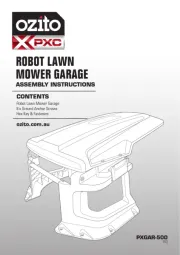
29 Juli 2025
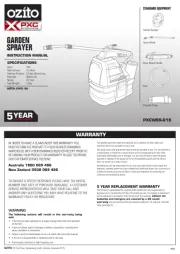
3 Juli 2025
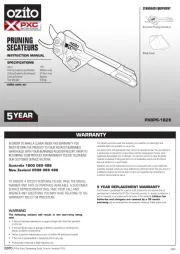
3 Juni 2025

10 December 2024

2 November 2024

8 April 2024

8 April 2024
Handleiding Niet gecategoriseerd
- Ambrogio
- Rocktrail
- Boyo
- CaterRacks
- Moomin
- Koliber
- Nedis
- Vinpower Digital
- KMA Machines
- Ankarsrum
- Baxi
- Pure 100
- PAX
- Da-Lite
- Akaso
Nieuwste handleidingen voor Niet gecategoriseerd
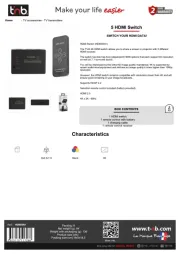
15 September 2025
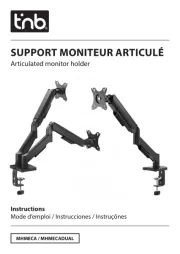
15 September 2025

15 September 2025
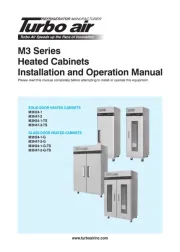
15 September 2025
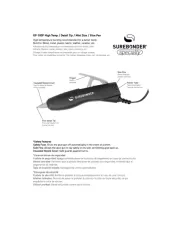
15 September 2025

15 September 2025

15 September 2025

15 September 2025
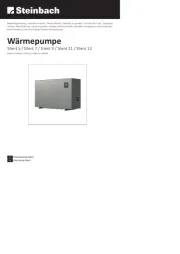
15 September 2025
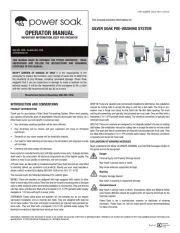
15 September 2025